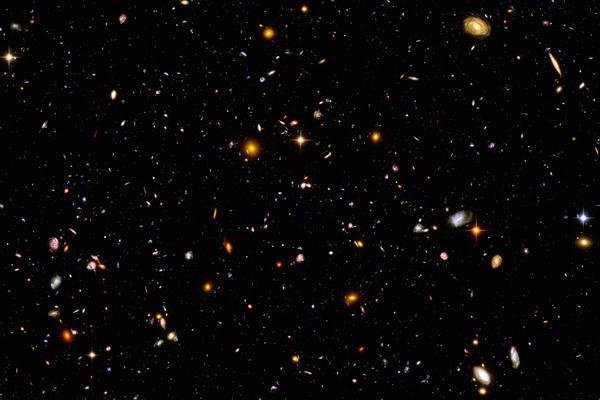Dynamical Tests
Mass, Radiation, and Dark Energy, and Expansion Rate of the Universe

Hubble Deep Field Image
The idea for small z
tests is straightforward. We
try to determine if the initial kick given to the Universe was large
enough to cause the Universe to exceed its escape
velocity and so assume one of the above solutions by acquiring
redshifts, distances, and masses of nearby objects in the universe.
How do we go about this exercise?
- We first determine the rate at which the Universe expands from
Hubble's law (which then
tells us how much
mass, radiation, and dark energy is needed to make Ω = 1).
- We then try to make a complete accounting of the components of
the Universe.
Sounds simple, Let's do it. The expansion rate of the Universe is given by
the Hubble constant Ho. The
critical density is then
ρc = 3Ho2/(8πG)
where G is the gravitational constant.
For convenience, we define Ω as
Ω = (ρ/ρc)
We see that if Ω > 1, the Universe is closed and if
Ω < 1, the
Universe is open. If Ω = 1, the Universe is flat.
To determine the ultimate fate of the Universe we must
find
Ω. To do so, we do the following:
we find the expansion rate of the
Universe, the Hubble constant, to determine the critical density, and then we find
the various components of the Universe, the mass, the photons, and the dark energy.
Return to Lecture 7

